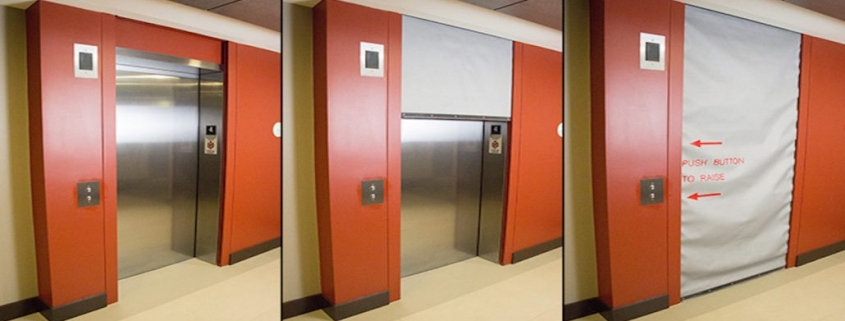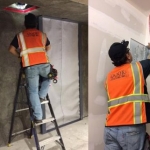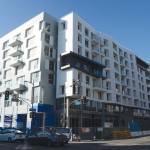Assisted Living Elevator Smoke Containment
The primary focus of assisted-living facilities is to provide care for elderly persons who can no longer maintain independent-living standards. Their facilities are typically commercial construction with a residential design element. Fire and life-safety concerns are a priority that can be made more difficult by the added challenge of ensuring accessibility for mobility-challenged persons. In some cases, a balanced approach is used when more stringent codes are required for the addition of a skilled nursing facility.
Sections 707.14.1, 909.20.5, and 1004.3.2.1 of the 2003 Intl. Building Code (IBC) require fire-rated smoke barriers to prevent the migration of smoke from the elevator shafts to the fire-rated egress corridors of a building. In a fire- or smoke-related event, elevator shafts tend to act like chimneys, allowing smoke to migrate from the fire’s origin to upper floors and endanger the lives of occupants or persons using the egress routes.
John Donelan, retired chief fire marshal for the California Office of Statewide Planning and Development (OSHPD), explains, “Several potential problems occur when a separate elevator lobby is designed. Lobbies present a hazard to building occupants because, during a fire, it creates a smoke filled area that someone could accidentally enter. These openings typically are not maintained or functional due to change in building use and tenant improvements.”
The use of fire sprinklers has not been documented to be an effective method of stopping or slowing the spread of smoke (Building Safety Journal, April 2006). Architect Anthony Loscavio with Devenney Group LTD. in Phoenix faced the following obstacles when designing a multi-level, senior assisted-living residence combined with a skilled-nursing facility:
- The design of separate elevator lobbies restricted the clear corridor egress width.
- A separate elevator lobby decreased the owner’s usable space.
- Projections of the doors and hardware presented obstacles and potentially hazardous conditions for mobility-impaired individuals.
- IBC codes restrict projections no more than 7 inches into corridor. (Conventional fire-door assemblies have difficulty meeting this compliance issue.)
- Projections of the doors and hardware created compliance issues for the access of emergency care first responders and the routine movement of wheelchair and litter-bed patients to, from, and inside the skilled nursing facility portion of building.
- Conventional fire-door assemblies create long-term maintenance issues for the owner.
- Conventional fire-door assemblies made it difficult to maintain continuity of architectural design.



